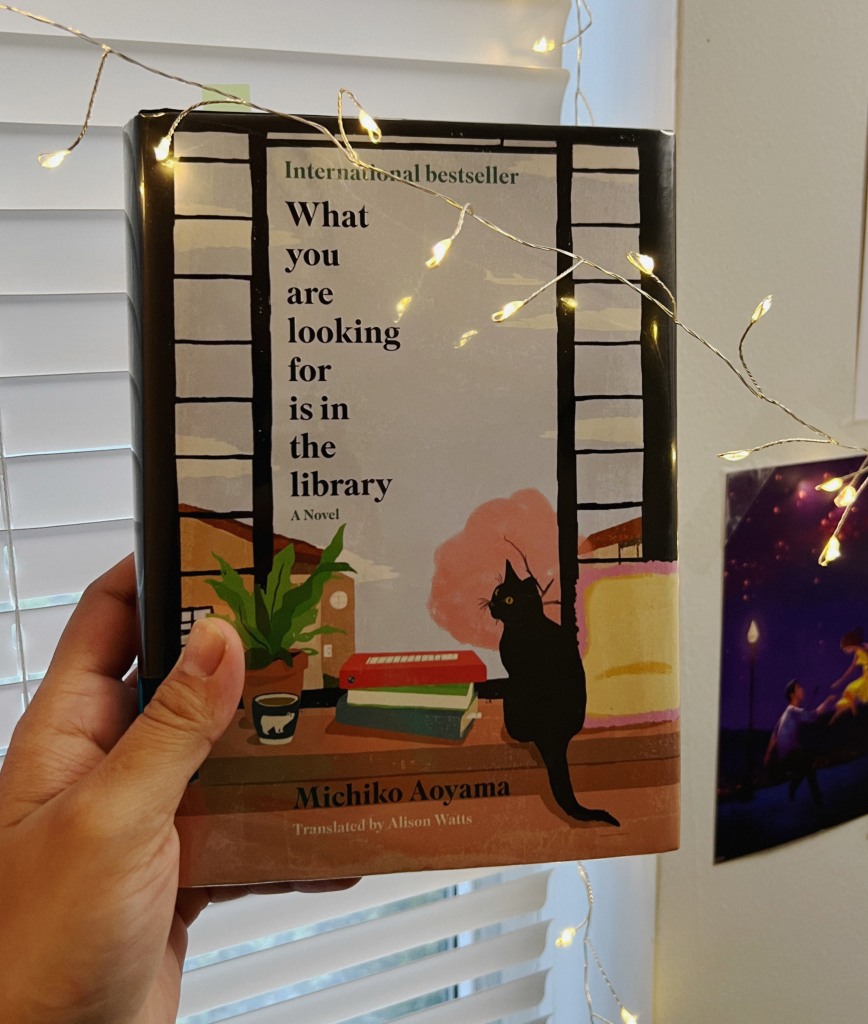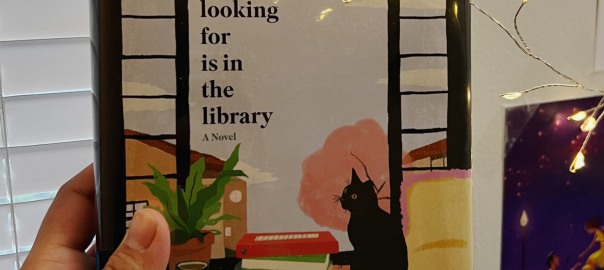
I’m currently reading a book called “What you are looking for is in the library” by Michiko Aoyama, originally written in Japanese and translated into English by Alison Watts.
I picked this book up from my university library, and based on my pattern over the last three semesters—where I ended up returning non-graphical novels after reading no more than 30 pages—I thought this time would be no different. But boy was I so wrong this time! I’m not sure what it is about this book—is it the nonchalant manner of the prose, the comfortably inviting plot, the ease of following the translation without frequent distractions, or the fact that it arrived at the perfect moment making it astonishingly relatable? Whatever the reason, I cannot put it down.
I’m already 141 pages in, which makes me a bit proud, as it has been a very long time since I’ve read a non-picture book this quickly. Was it the stress of university coursework that previously bogged me down from committing to non-academic books? Was it being busy with life in a new country, not feeling the loneliness that often draws me to the world of words? Or was it simply my inability to keep focused on books for long, always distracted by my phone and social media?
I don’t have answers to any of these questions at the moment, but one thing is certain: this book has made me pause and introspect, prompting me to read with complete attention. Further, it has inspired me to write this piece on my blog, which has remained barren for countless days.
I had initially thought to write this piece after finishing the book, to avoid getting ahead of myself and to reserve my judgment. However, something in the book prompted me to start writing now. That “something” was the two words in the title of this writing—”aboveground” and “belowground.” These words are initially used to describe the anatomy of a plant in a book within the book I’m reading, but the protagonist later uses them metaphorically in terms of his career aspirations. The author introduces the phrase “parallel career” and makes a comparison, illustrating how two careers can flourish together, parallel to each other. The aboveground parts—stem, leaves, flowers/fruits—are as vital to the plant as the belowground roots, which we only tend to notice when they offer us something, like carrots or potatoes. Yet, to the plant, the roots are crucial, much like how a parallel career path enables some people to thrive.
I like how the characters in the book are separate individuals but are still somehow connected, through the librarian – Sayuri Komachi. This book is heartwarming and cozy, a perfect pick for someone like me who needs to destress in the midst of wrapping up a thesis completely unrelated to the world of literature!
– Suri
